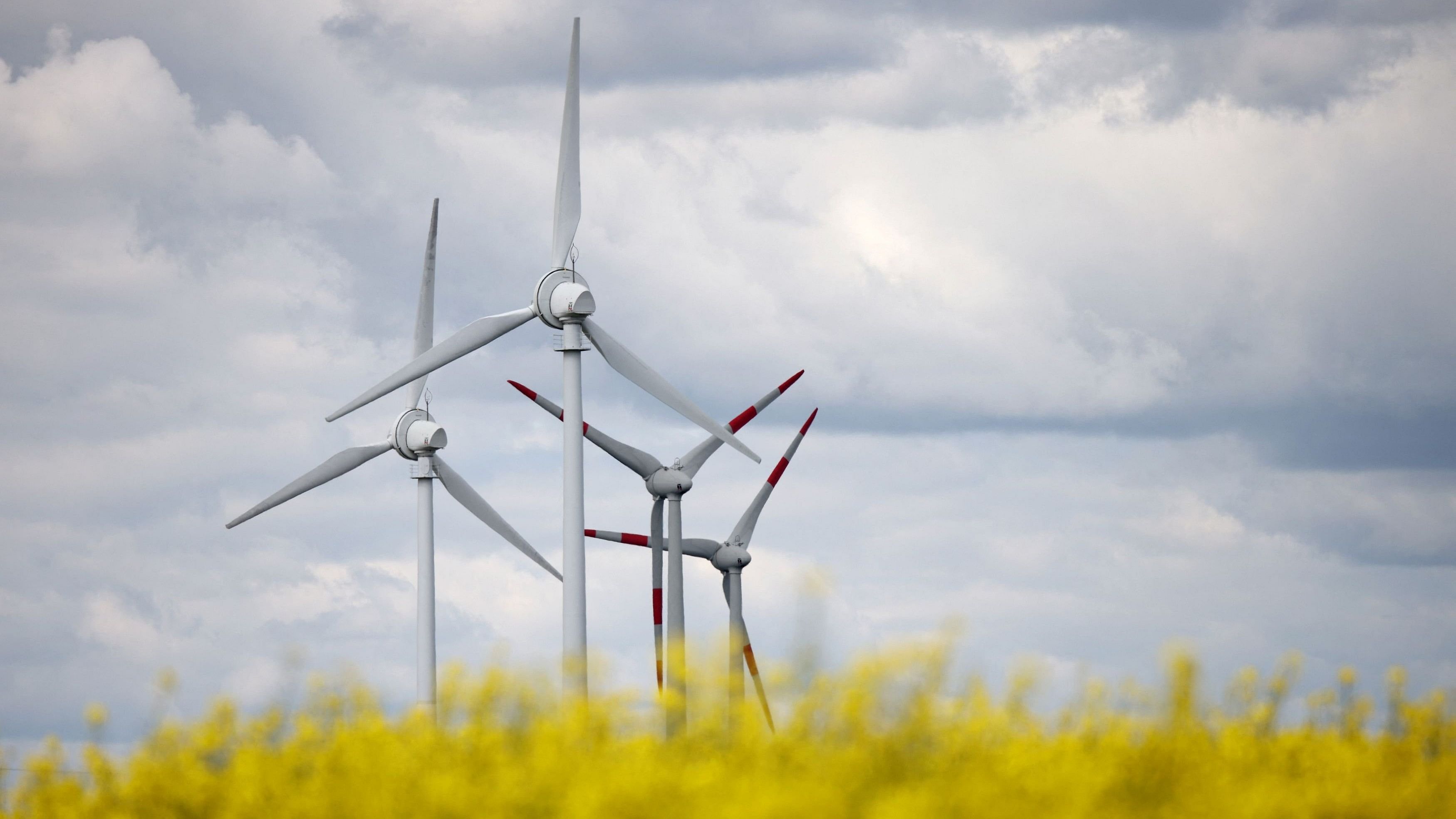
Power-generating windmill turbines.
Credit: Reuters File Photo
By David Fickling
For the past few years, the global wind industry has been stuck in the doldrums. With rising interest rates and materials costs whittling away developers’ profit margins, and political and economic elites cooling on the energy transition, installations of new turbines went sideways. Even as the electric vehicle and solar industries gathered speed, wind ran into turbulence. The sector was left drenched in red ink, project cancellations, and failed auctions.
That appears to be ending — but don’t get your hopes up too much. If wind is recovering, credit goes to the nation that’s currently the bogeyman stalking the EV and solar sectors: China.
First to the good news. A record 117 gigawatts of new wind turbines were installed around the world last year, the Global Wind Energy Council, a trade body, said in a report last week.
That’s a stunning 50 per cent pace of growth compared to the previous year, and finally puts the world above the previous 95 GW record set in 2020. Wind generated nearly 2.5 terawatt-hours of electricity in 2023, GWEC found — enough to provide close to 90 per cent of the European Union’s plug power. It’s likely to overtake nuclear as the world’s biggest source of clean energy (after hydroelectricity) some time in the next 12 months.
Credit: Bloomberg
The bad news comes if you take China out of the equation. Do that, and it looks like we’ve been stuck in neutral for three years. Ex-China installs last year were just 41 GW — an increase of only 0.088 GW relative to 2020. That’s equivalent to half a dozen extra big offshore turbines, in an industry that should be connecting thousands every year.
Right now, the big headache for clean technology is mostly that much of the world is fretting about what’s being deemed as Chinese overcapacity. A breakneck pace of factory-building means that we will soon be equipped with the production lines to manufacture all the solar panels, EVs and lithium-ion batteries we need.
Growth has been so headlong that US Treasury Secretary Janet Yellen and German Chancellor Olaf Scholz have made trips to Beijing over the past fortnight, complaining that China’s ambition is pushing down prices and leaving too little space for other countries to build up their own clean-tech sectors.
Credit: Bloomberg
That protectionism is wrong on the economics, and will serve only to slow the energy transition. The state of wind outside China illustrates why.
Thanks to the vast size of turbine blades and the high share of bespoke engineering that goes in to producing immense concrete-and-steel towers and foundations, wind is a much harder industry to trade across borders. In contrast to solar and EVs, which can be bought by individuals and non-energy businesses whenever their costs look attractive, it also depends on the behavior of large utilities navigating the regulatory morass that plagues infrastructure in developed countries.
The picture isn’t a pretty one.
Credit: Bloomberg
Last year’s 117 GW of installs is barely more than a third of the 320 GW that the International Energy Agency reckons we’ll need to be connecting each year by 2030. GWEC’s current forecast is for a total turbine fleet of 2 terawatts by 2030 — just two-thirds of the 3 TW that’s needed for net zero.
“From Europe to Americas, there has been chronic underinvestment in future supply chain capacity,” GWEC wrote. “Wind industry actors are hesitant to scale up” thanks to doubts about future levels of demand. That uncertainty is being driven by dithering policy support from governments, as well as delays in providing permits, grid connections, and land.
In the US, local supply chains are already running into bottlenecks for almost every complex component of a wind farm, with the only exceptions being basic steel plate, copper, and concrete, the report found. In Europe, the same shortages will start to spread this year and next. Only in China is the supply chain sufficient to keep wind growing without speed bumps.
Credit: Bloomberg
That gives the lie to the paranoia about China’s clean-tech ambitions seen in recent weeks. If it was exported Chinese overcapacity that was preventing the US and Europe from investing sufficiently in clean technology, you’d expect to see rich countries taking a far more aggressive approach in the one sector that’s naturally protected from imports. Instead, it’s trade-protected wind that’s falling furthest behind where it needs to be. To the extent that there’s grounds for hope around the energy transition right now, it’s largely thanks to the availability of cheap, clean Chinese products that US and European governments seem so keen to exclude.
If we want to experience the fourth industrial revolution needed to rewire the world’s energy systems, we have to spend the money on it. This requires an all-of-the-above strategy, welcoming government support whether it’s in China, the US, or Europe, rather than kicking off a destructive trade battle. If the tools to prevent global warming are getting built on a scale that the job requires, it’s not overcapacity. It’s just the basic level of capacity the world needs.